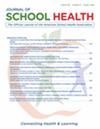Balancing Fidelity and Adaptation: Action-Oriented Research Towards Implementing a Nutrition Education Program Among Adolescents
Abstract
Background
Implementation of school-based health promotion programs requires contextual fit. To strengthen the nutrition education program “Krachtvoer” (ENG: “Power Food”) and learn general lessons about contextual fit, this study examined how the program, the context, and program-context interactions affected teachers' balancing between implementation fidelity and adaptation.
Methods
As part of a co-creation process with continuous micro-process cycles of implementing, measuring, evaluating, and adapting the program, action-oriented research was conducted during the pilot implementation of program modules by 25 teachers in 32 classes with 635 students. Using observations and interviews, data were collected about indicators of the implementation process, technology, layout, and content aspects of the program, inner and broader school contextual factors including teacher, student, and school characteristics, and interactions between program- and context-related aspects that influence the implementation process.
Results
Even small mismatches between the program and the context affected the implementation process. Differences in the technological savviness of teachers and students, “adaptive management” skills to respond to changing circumstances of teachers, and the maturity and attention span of students were among the many contextual differences in and between schools.
Implication for School-Based Health Promotion
Sustainability of health promotion programs fitting the context requires continuous and co-creating efforts from all stakeholders.
Conclusions
Action-oriented research with micro-process cycles proved appropriate for strengthening the program. However, further research is needed on capacity building among program implementers in balancing fidelity and adaptation.


 求助内容:
求助内容: 应助结果提醒方式:
应助结果提醒方式:


